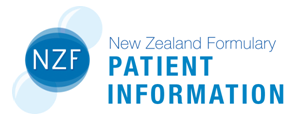What does it do?
Atgam® is used to treat transplant rejection. It is also sometimes used to treat blood conditions.
How is it given?
Atgam® is given as a slow infusion into a vein over at least 4 hours.
Can you take other medicines?
Tell your pharmacist or doctor about all medicines or treatments that you may be taking, including vitamins, herbal products or recreational drugs.
What side effects might you notice?
| Side Effects | Recommended action |
|---|---|
|
Symptoms of allergy including: skin rash, itching, swelling, trouble breathing Seizures Change in heartbeat Reduced number of blood cells that fight infections or help your blood to clot - symptoms include: fever, chills, sore throat or generally feeling unwell, or easy or unusual bruising or bleeding |
Tell your doctor immediately |
|
Headache Increased blood pressure |
Tell your doctor |
|
Nausea, vomiting, diarrhoea |
Tell your doctor if troublesome |
If you notice any other effects, discuss them with your doctor or pharmacist.
Other information:
- Tell your doctor if you have heart, blood pressure or blood problems.
- Tell your doctor if you are pregnant, planning to become pregnant, or breastfeeding.
- Tell your doctor if you are allergic to any products made from horse proteins.
- You may experience flu-like symptoms during treatment with Atgam®. This is common and usually resolves after the first few doses. Discuss with your doctor.
- Atgam® affects your immune system. Before you start and while you are using it, check with your doctor what vaccines you might need. You should not have a live vaccine while using it.
This leaflet contains important, but not all, information about this medicine.
Prepared by the MyMedicines Committee at Christchurch Hospital, Te Whatu Ora - Waitaha, New Zealand. October 2020
For more general information about this sheet and its contents, see: What does a My Medicines sheet cover?
Te Reo Māori
Te Reo Māori information sheets supported by Health Quality and Safety Commission New Zealand
Web links for this sheet in different formats
Click on buttons to copy web addresses for this leaflet:
If your browser does not automatically copy these links use its copy command instead.
About My Medicines
My Medicines Patient Information Leaflets (PILs) contain important, but not all, information about the medicines they describe.
For more information about the sheets, see: What does a My Medicines sheet cover?
My Medicines is developed by a team at Te Whatu Ora – Waitaha. Our team is made up of doctors, pharmacists, and a non-medical person to help us keep to plain language. We also discuss our information with specialist health professionals or groups when needed

